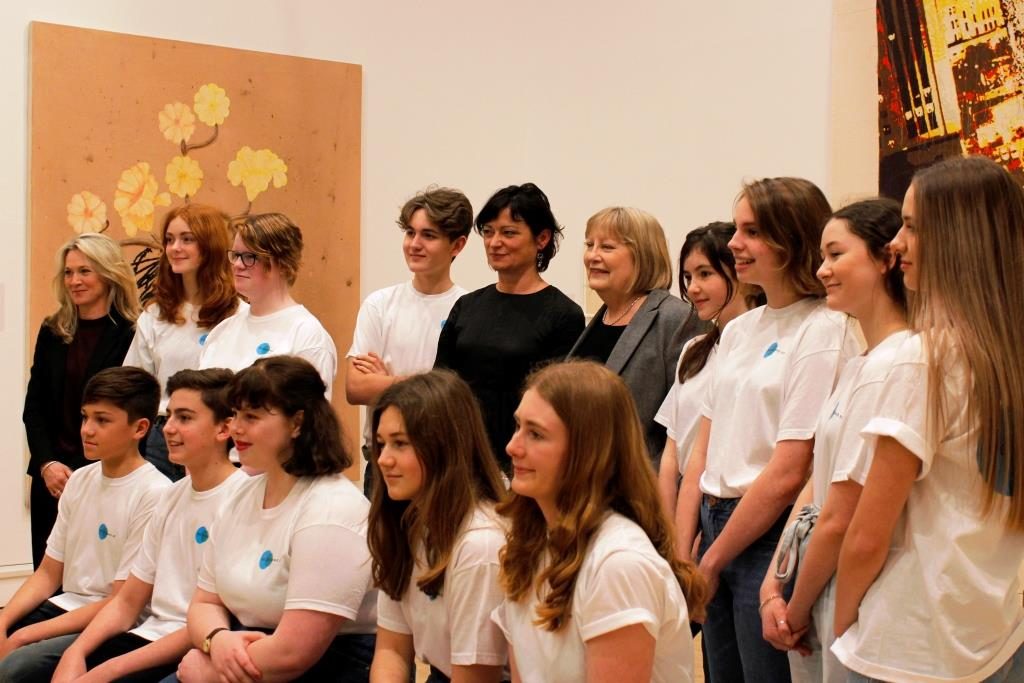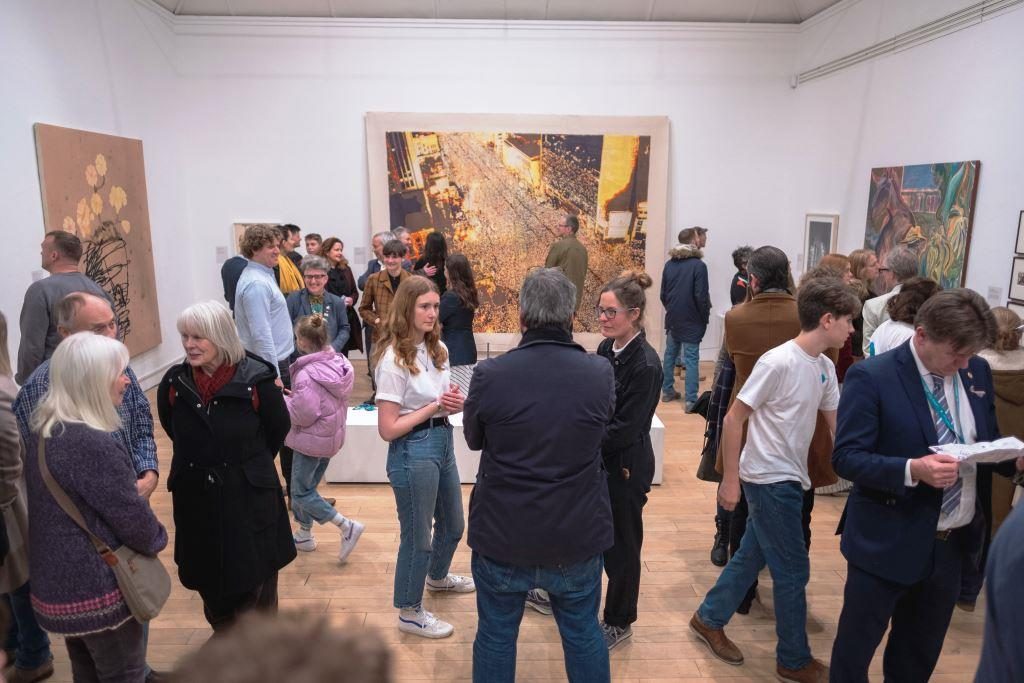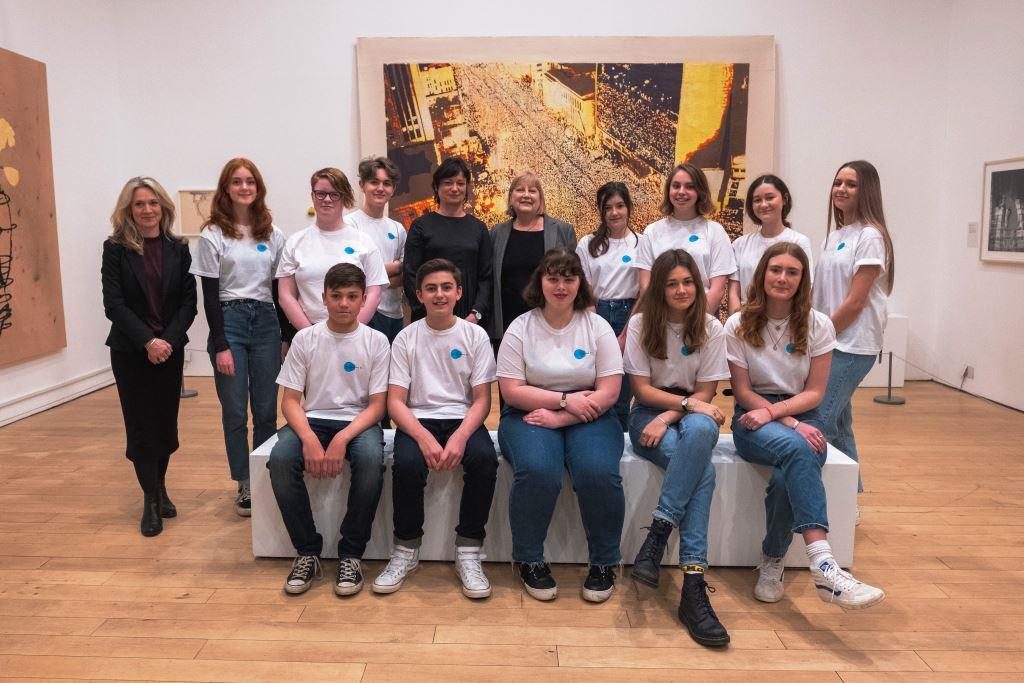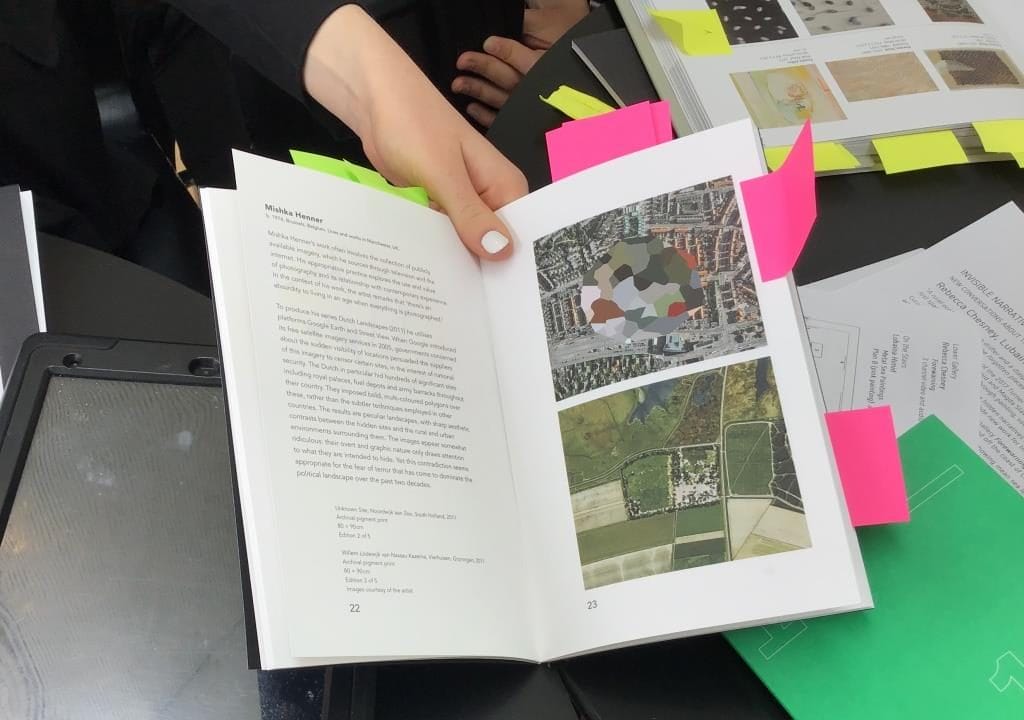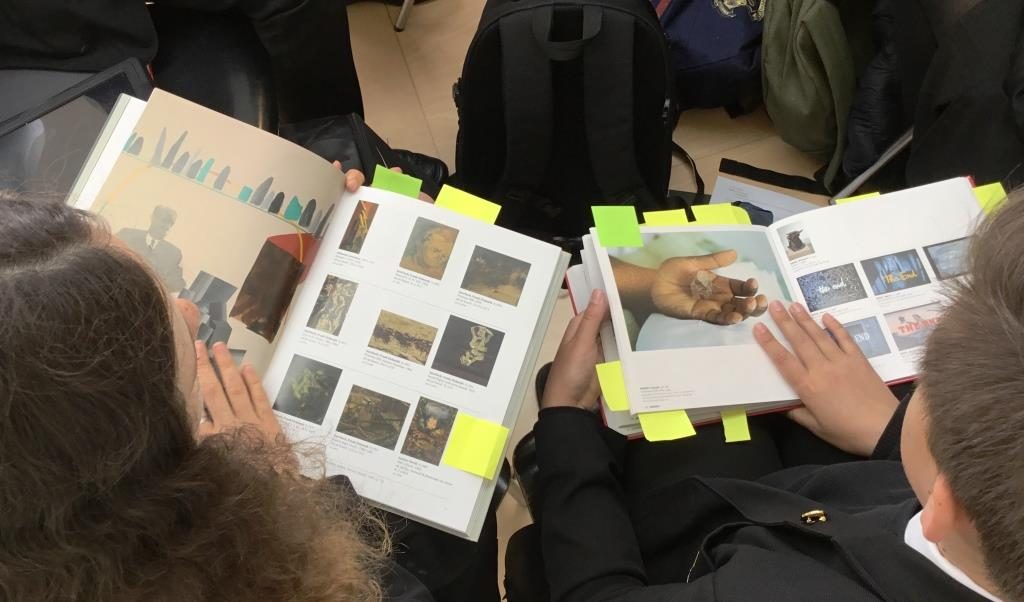For the first time in the Arts Council Collection’s history, a group of school children was asked to curate a major exhibition from some 8,000 contemporary British art works. Cat Gibbard, programme curator/ learning lead at Newlyn Art Gallery & The Exchange, outlines the process and the learning achieved through curation in an article published in The National Society for Education in Art and Design magazine Autumn 2020, Issue 29.
In March 2019, Newlyn Art Gallery & The Exchange, along with Sunderland Culture and Firstsite in Colchester, was made a National Partner of the Arts Council Collection (ACC). Founded in 1946, ACC consists of some 8,000 contemporary British art works which crucially belong to the nation.
But how does the nation have a hand in selecting the work that goes on display in galleries around the country? Our pitch to ACC was focused on a programme of activity called New Voices, through which we would enable groups from our community to curate exhibitions over a three-year period.
With a keen awareness of the national decline of the profile of arts within education, we invited pupils from a local school, Mounts Bay Academy in Penzance, to make the first selection. We met with 14 art, photography and graphics students, all aged between 12 and 16 years. Claire Dale, director of Creative Arts and Technology at the school, had selected students she felt were particularly good at expressing thoughts and ideas. They quickly became known as the MBA [Mounts Bay Academy] Collective by staff at the gallery, a name they chose to keep.
The aim of the first session was to tease out a common interest which could be used as a tool to research the collection. To get to know the group, we asked them to share something about themselves, their interests and their school. At some point in this conversation, as we drank tea and crunched biscuits, the curriculum area of ‘global citizenship’ came up. In 2005, the Department for Education and Skills produced a pamphlet called Developing A Global Dimension In The School Curriculum. It outlined eight concepts: global citizenship; conflict resolution; diversity; human rights; interdependence; social justice; sustainable development; and values and perceptions. Mounts Bay Academy, in common with many other schools, has absorbed these concepts into their Citizenship curriculum, broadening their study to the global. Agreeing that the themes of global citizenship could be a suitable test for accessing ACC, the Collective pulled out conflict, diversity and perception as being of particular interest, amalgamating social justice and human rights under the heading of ‘issues’, and adding mental health, which they believed should be a concern. Taking these five themes, they dived into ACC catalogues applying Post-it notes to works that fitted.
There were new works from artists we hadn’t come across before, such as Young in Hong, whose large textile piece Burning Love depicts a scene from a candle-lit vigil held in Seoul, South Korea, in 2008. Demonstrating against the Korean government’s reversal of a ban on US beef imports, the protest was one of the most important democratic events in Korea’s modern history, but one which we in the West remained generally ignorant of due to a lack of media coverage. They found iconic works, such as Francis Bacon’s unsettling Head VI, which for them illustrated anxiety beautifully.
They found work that provoked passionate debate, such as Margaret Harrison’s Women Of The World Unite, You Have Nothing To Lose But Cheese Cake. Painted in 1969 and intended as a humorous feminist critique, the work mimics the pin-up or cheesecake photography that was common in magazines and advertising at that time. The older members of the Collective appreciated it as a joyful act of rebellion, while others claimed: ‘It’s our childhood destroyed in a painting’ (Izzy, aged 15).
Global events, from wild-fires to viral outbreaks, have highlighted the incontrovertible interconnectedness of our world, and our responsibility to empower young people to shape the world they want to live in.
It became clear that the themes contained within global citizenship threw up exciting works and which, with a little more research and refinement, could produce a powerful exhibition. The collective was excited by this prospect and for several months ran with a working title of How To Be A Global Citizen. During this time, the long list of 70 works was whittled down to just 17. Listening to the Collective debate the pieces was one of the highlights of the process. Applying one of the core values of global citizenship, they respected each other’s opinions and the majority had the final say. For example, a decision was made to drop Francis Bacon’s Head VI, reasoning that the piece could potentially steal the show and they wanted each work to be viewed with equal weight.
As a plenary to our second meeting, we asked if anyone had a piece of work they felt very strongly about, perhaps that wasn’t currently on the longlist or that was, but they believed really shouldn’t be. We directly encouraged quieter members of the group to speak, which is how Michael Armitage’s Kariakor was selected. The painting is a curiosity, as it depicts a man carrying a horse on his back. It was the apparent weight of the horse and the fragility of the man that appealed to Billy (aged 14), who saw it as a strong metaphor that could be applied to several of the themes. As the list of works became smaller, the Collective began to consider the size and colour of works, what would sit happily together and what might present problems.
The exhibition title, Go On Being So, was chosen near the end of the process, referring to the Collective’s quest for strength and resilience. ‘Things might not be too good but there’s still life, you’re still living, there’s still beauty in it’, said Lilly (aged 16). Such qualities are demonstrated in works such as Karl Ohiri’s How to Mend a Broken Heart and Rod Dickinson’s Egg Bag. The title also acts as a provocation, reflected in Gavin Jantjes’ Freedom Hunters and Donald Rodney’s Self Portrait: Black Men Public Enemy. As Kit (aged 15) explains; ‘Go On Being So, becomes a challenge – Can we? Should we?’
As might be expected, through the process of curating an exhibition, the MBA Collective gained invaluable experience of working as a team in a professional context. However, through their engagement with art – with its ideas and ambiguities – it also gave them a far greater insight into themes of global citizenship, enabling the group to develop their own opinions and views, and fostering respect for different perspectives, locally, nationally and globally. Global events, from wild-fires to viral outbreaks, have highlighted the incontrovertible interconnectedness of our world, and our responsibility to empower young people to shape the world they want to live in.
Go On Being So at Newlyn Art Gallery ran from 14 February to 30 May 2020. It was the first time in ACC’s 74-year history that a group of schoolchildren curated a major exhibition from their works.
The MBA Collective: Billy, Elsa, Ethan, Evie, Flo, Izzy, Josie, Katie, Kit, Lilly, Matt, Morgan, Rosie and Tallulah.
The article appeared in The National Society for Education in Art and Design magazine, Autumn 2020 Issue 29

